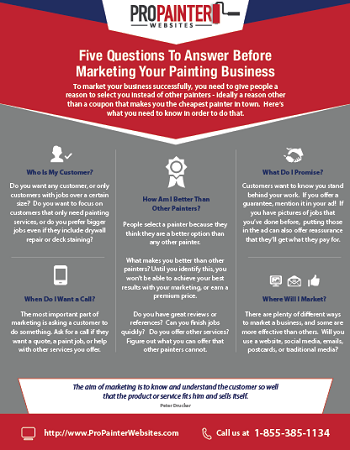Discover Just How Seasonal Influences Can Influence The Efficiency Of Commercial External Paint And Figure Out The Most Favorable Times To Make Certain Sturdy Results For Your Project
Discover Just How Seasonal Influences Can Influence The Efficiency Of Commercial External Paint And Figure Out The Most Favorable Times To Make Certain Sturdy Results For Your Project
Blog Article
Web Content Author-McLamb Urquhart
When you're planning a business external paint task, seasonal elements can make or break your results. You'll want to take into consideration just how temperature level and humidity effect paint application and drying out times. Picking the ideal season can ensure your paint adheres appropriately and lasts longer. However which seasons are absolutely the best for this kind of work? Let's check out the key elements that can impact your job's success.
The Influence of Temperature Level on Paint Application
When you're planning a commercial exterior painting job, the temperature can substantially affect how well the paint sticks and dries out.
Ideally, you want to paint when temperatures vary in between 50 ° F and 85 ° F. If it's also chilly, the paint may not heal effectively, resulting in problems like peeling off or fracturing.
On the flip side, if it's too hot, the paint can dry out also quickly, protecting against correct adhesion and resulting in an unequal coating.
You should also think about the time of day; early morning or late afternoon uses cooler temperatures, which can be a lot more positive.
Always check the producer's suggestions for the particular paint you're utilizing, as they usually give guidance on the perfect temperature range for optimal outcomes.
Humidity and Its Effect on Drying Times
Temperature level isn't the only ecological factor that influences your industrial outside painting project; moisture plays a considerable function too. High humidity levels can reduce drying out times drastically, impacting the overall high quality of your paint job.
When the air is filled with dampness, the paint takes longer to treat, which can result in issues like inadequate bond and a greater risk of mildew growth. If you're painting on an especially damp day, be prepared for extensive wait times in between coats.
It's important to monitor regional climate condition and plan as necessary. Ideally, aim for humidity levels in between 40% and 70% for ideal drying.
Maintaining these consider mind ensures your task remains on track and supplies a long-term finish.
Best Seasons for Commercial Exterior Painting Projects
What's the very best time of year for your industrial outside painting tasks?
hop over to here and very early loss are typically your best choices. Throughout these seasons, temperature levels are mild, and moisture degrees are usually reduced, creating optimal problems for paint application and drying out.
Prevent summertime's intense heat, which can trigger paint to dry too swiftly, bring about bad adhesion and finish. Similarly, wintertime's chilly temperature levels can hinder appropriate drying and treating, running the risk of the durability of your paint work.
Aim for days with temperature levels in between 50 ° F and 85 ° F for optimum results. Remember to check the neighborhood weather report for rainfall, as damp problems can destroy your project.
Get More around these elements ensures your painting job runs smoothly and lasts longer.
Verdict
In conclusion, planning your business exterior painting jobs around seasonal factors to consider can make a considerable difference in the end result. By scheduling work throughout the suitable temperatures and moisture degrees, you'll make sure better attachment and drying times. Keep in mind to keep an eye on local weather report and pick the right time of year-- springtime and very early fall are your best options. Taking these actions will certainly assist you attain a long lasting and specialist surface that lasts.
